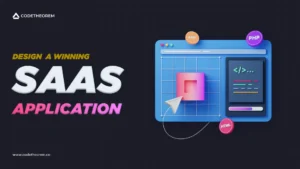Article content
Introduction
Let’s break the ice! Acquiring new users is way different than turning them into long-term customers. The difference lies in the user onboarding experience. User onboarding is the bridge that helps in turning new users into long-term customers. First impressions are everything. Building a great product is a failure when the very first touchpoint is not good enough.
Onboarding is the point where the user will decide whether they will be using the app in the future or not. Onboarding has been overlooked. A simple signup and product tour are not enough. The right communication to make the users understand the value your product will deliver is crucial. And it is in your good favor to spin your attention towards the user onboarding experience on your product.
Let’s dive into what is User onboarding and what are the user onboarding best practices that will improve your overall UX.
What is User Onboarding?
User onboarding is the process of acquainting a new user with your digital product. It is the first move towards helping them adopt the app for long-run use. Similarly, for a successful user onboarding, keeping your existing users to allow them a whole experience with an onboarding process is important.
The onboarding journey is the process of guiding users for finding new value in your product. Actively you guide every user towards a habitual adoption of a product that in the end, they cannot imagine their life without it. Getting the user accumulated with the product they’ve just landed on.
The first touchpoint with the product is crucial be it any industry. Once a user faces a bad experience the chances are high that they will never return. Hence, your business requires seamless and fast customer onboarding.
Why is User Onboarding important?
Firstly, onboarding helps users in learning and master the use of your product faster than they could’ve done on their own. This helps in increasing customer satisfaction and reducing the churn rate. Users don’t have the time to waste learning the usage of a product. They want to accomplish their target on the product quickly. This is where the user will decide whether he/she will continue using this product.
It helps users to understand and experience the value they will get from the product. This will give them a reason to come back. For SaaS onboarding, a free/trial version will help know the value of the product and users will be more likely to convert to paid customers.
Users come first
The best way to beat your competition is to invest in your users. In the digital era, users won’t wait for anything. They look for convenience and speed, i.e., how fast they can get their work done. They don’t like to spare another minute and look for alternatives for your product category.
First impressions
If the users are not happy with the first impressions of the product they are not coming back. It is all about making the users feel at home right from the moment they open your product. The first interactions are what matters. How are you going to convince the users to continue using your product without making things easy for them to use your product?
Smart investment
When you invest your time and resources in user onboarding will always work in your favor. User onboarding may not seem like an advantageous investment in the first instance. But it will be the reason for the reduced churn rate and increased conversions.
User retention
User retention is one of the key metrics for your product. Retention starts with user onboarding. Most users won’t leave your product if they have had a positive onboarding experience. Further, this helps in increasing the customer’s lifetime value i.e., CLV.
User onboarding best practices
To make the user onboarding process good you need to follow the industry-driven and research-based practices that help you build a profit-driving product. Customer onboarding helps in increasing user retention. User retention drives revenue. Revenue brings you closer to achieving the business goals.
Know thy audience
The most common mistake businesses make is that they assume that the users will learn to use the product on their own. But, most of the time it is not the case. Firstly know who your target audience is, create buyer personas, and provide them a guide on how to efficiently utilize your application.
Beyond onboarding, your user interface and user experience equally pay their part to onboard the user.
To master the onboarding of your product you need to identify and work on the “why”. Define why the target audience will use the product and what they get from the product. This can be identified through user research.
Map out user journey
With the complete data of your target users, now you can easily map out a customer journey map. For that first, you need to craft the user personas to help you establish a user flow that reflects their goals and needs. The data you collect on your target users will help you understand their purpose and prioritize it by creating their user journeys.
You can increase the conversions and drive new users, you need to personalize the app onboarding experience by creating multiple landing pages for each of them. Lastly, you will see which onboarding elements worked for your product.
Barriers to ‘aha’ moment
The aha moment or the wow moment is when the users realize that they want to keep using the product. It is when the users realize the core value of your product. The aha moment occurs when the onboarding experience is good. A strong first impression always strikes the right chord in the users’ minds.
The aha moment helps the users see the benefit they will get from your product. This adds to the overall user experience of the product.
What you need to make sure of is how to avoid any barriers i.e., the features that will ruin the aha moment. The following are some tips for removing the barriers in an aha moment:
- Don’t ask for a compulsory sign-up or account creation
- Leave the task of asking for user information at bay, for the end
Existing users onboarding
The last stage of retention is keeping the spark alive for the users to keep using your product. There will be users who’ve successfully signed up and used your product for a while and now they are simply inactive and hardly ever visit the product. Your goal is to make your product from once in a while to an everyday tool.
Simultaneously, you need to ensure that with every new feature release, you keep the users informed about it. This helps in keeping users more engaged.
In-app guides
Can you guess why a product fails in the market despite being the best among the rest? The primary cause is they failed at communicating the value proposition of their product. User onboarding brings your users to the aha moment with your product. The best way to get the users acquainted with your new product is through in-app guides like product tours, progress bars, checklists, tooltips, welcome screens, and more.
Simultaneously, if you want a long-term customer base and higher user retention you need to make sure that you help the user understand that this product is something they cannot live without. You can accomplice that by reminding your users of the value of your product from time to time to your users by onboarding them with new features, and availing tooltips for whenever they are stuck.
Ultimately, the most important of all ensure that the user can easily find customer support throughout the app without the need of breaking a sweat to contact your support team.
Gamification
Gamification refers to the integration of gamifying elements into your digital product. It helps in increasing the engagement rate. The element of fun and competition influences more activity across your app. You can make use of gamifying elements like progress tracking, leaderboards, challenges & rewards, badges & stickers for accomplishment, and more. Leaderboards and challenges contribute to motivating the users to engage more and achieve more than their fellow users.
Above all, the progress bars are helpful in simplifying the user onboarding process. They keep the users informed of their progress which keeps the users’ interest intact throughout the onboarding process.
Personalization
Your target audience would be numerous different personas. Some might be well-acquainted with the kind of product you are offering. Some could be entirely foreign to your product concept. This is the case when you launch a new product. A lot of apps ask you in the very beginning about your interests or topics you like in order to customize the app.
One of the best examples is Pinterest, the app will ask about your interesting topics to show you related pins. Moreover, the app recommends whom to follow and notifies you about the accounts your network is following. This keeps the users more engaged even after the onboarding step is done.
All in all, users can relate and feel more familiar with your product through personalization. Thus, increasing the user retention rate.
Friction
One of the biggest challenges in user onboarding is that sometimes onboarding UX becomes too complex than the app itself. If the app is simple then the onboarding should be as simple as possible. Even when the app is a little complex to use, make sure you provide the information needed to learn the app in a simplified manner.
The best way to reduce friction during onboarding you can tailor the onboarding experience according to the users. Categorize the user personas and then tailor the onboarding accordingly. Another point where the friction occurs the most is when the app needs certain permissions to run successfully however for the users, the app permissions are not their favorite thing. So it is better to ask for permissions when needed instead of asking for them during the onboarding.
Further, you need help users to understand why they should be allowed permission to your product. You have a single shot at asking permission the right way.
Ongoing process: test & iterate onboarding UX
Onboarding is a stage that needs your constant attention. Keeping an eye always open for the onboarding metrics will help you understand how many users are engaging and how many have left the product.
You need to keep track of the necessary metrics to keep a check of what is working and what is not working in your favor. The process of testing and iterating will never end. For this A/b testing is an ideal method to see how the users respond to various onboarding experiences.
User onboarding software
Adopting user onboarding software will help you maintain and create a user onboarding flow from the start to the end of the user onboarding process. Using customer onboarding software can help you increase user engagement and conversions.
Also, there is multiple onboarding software available that requires little to no coding to integrate into your product. The following are some of the helpful user onboarding tools you can use:
- Userguiding
- Appcues
- Chameleon
- Userpilot
- Pendo
Conclusion
To conclude, even though the onboarding journey demands improvements and changes periodically, it is worth the investment considering the long-term business goals. This stands true es[pecially for SaaS products. Additionally, connecting with the users is a core element of brand building. Thus, user onboarding will be the bridge to connect your product to the target audience. This will bring an increase in the users’ loyalty towards your brand. Hence, you will be motivated to deliver an exquisite experience to your target customers.


















